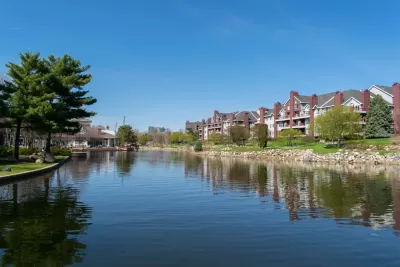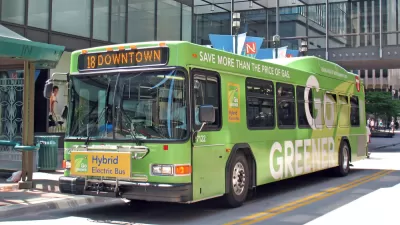The city of Edina, Minnesota, provides an example of the suburban reaction to a wave of multi-family residential construction.

Burl Gilyard repots from Edina, Minnesota, where the city of 51,000 mostly affluent residents has been wrestling with a high-rise development that would add two 20-story-plus towers—the city's first condo project in over a decade.
The 170-unit project met initial interest from potential buyers—the project "was designed to appeal to Edina empty-nesters who wanted to stay in the city but didn’t have other appealing options," according to Gilyard. "It also was designed to appeal to the general public: The Estelle included pedestrian-friendly design elements at the ground level with 'walkable tree-lined interior streets, plazas, green space and generous setbacks from France and 69th,'' according to a press release from the development team."
Alas, the project triggered a loud group of opponents—residents of the residential neighborhood west of the proposed development. An amendment to the city's comprehensive plan that would have allowed for the development failed to pass through the Edina City Council during on October hearing.
Gilyard shares that anecdote as an opening for a larger discussion about density in the Twin Cities region, where the regional Metropolitan Council has been tracking a large increase in the number of multi-family units under constriction in recent years.
Edina, however, could be considered a front line of sorts in the battle over density, and an excellent case study for other affluent residential suburbs located near the urban core of growing regions.
Perhaps nowhere is the conflict more publicly evident than in Edina, a first-ring suburb that borders Minneapolis to the west. Since 2014, more than 900 new multifamily units have been added in Edina. Nearly 700 apartments are currently under construction, and more than 900 additional units have been proposed there. Edina ranked eighth in the metro for the total number of multifamily units permitted between 2014 and 2016.
FULL STORY: Edina struggles with the ‘d-word’ — density

Planetizen Federal Action Tracker
A weekly monitor of how Trump’s orders and actions are impacting planners and planning in America.

San Francisco's School District Spent $105M To Build Affordable Housing for Teachers — And That's Just the Beginning
SFUSD joins a growing list of school districts using their land holdings to address housing affordability challenges faced by their own employees.

The Tiny, Adorable $7,000 Car Turning Japan Onto EVs
The single seat Mibot charges from a regular plug as quickly as an iPad, and is about half the price of an average EV.

Seattle's Plan for Adopting Driverless Cars
Equity, safety, accessibility and affordability are front of mind as the city prepares for robotaxis and other autonomous vehicles.

As Trump Phases Out FEMA, Is It Time to Flee the Floodplains?
With less federal funding available for disaster relief efforts, the need to relocate at-risk communities is more urgent than ever.

With Protected Lanes, 460% More People Commute by Bike
For those needing more ammo, more data proving what we already knew is here.
Urban Design for Planners 1: Software Tools
This six-course series explores essential urban design concepts using open source software and equips planners with the tools they need to participate fully in the urban design process.
Planning for Universal Design
Learn the tools for implementing Universal Design in planning regulations.
Smith Gee Studio
City of Charlotte
City of Camden Redevelopment Agency
City of Astoria
Transportation Research & Education Center (TREC) at Portland State University
US High Speed Rail Association
City of Camden Redevelopment Agency
Municipality of Princeton (NJ)





























